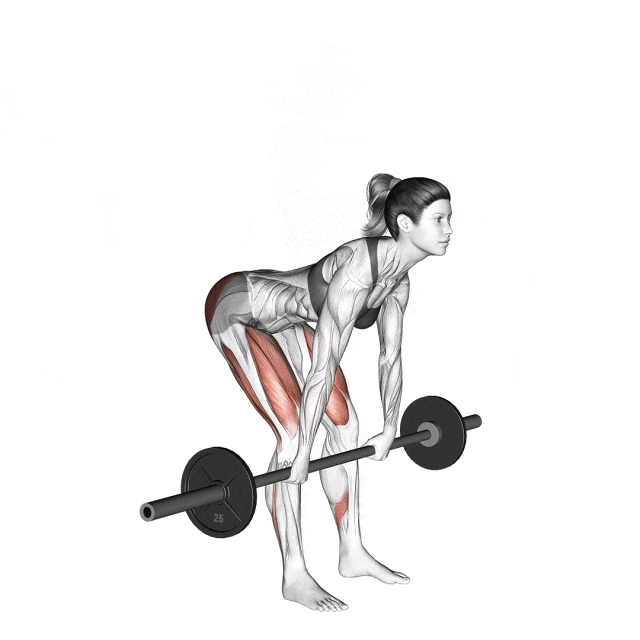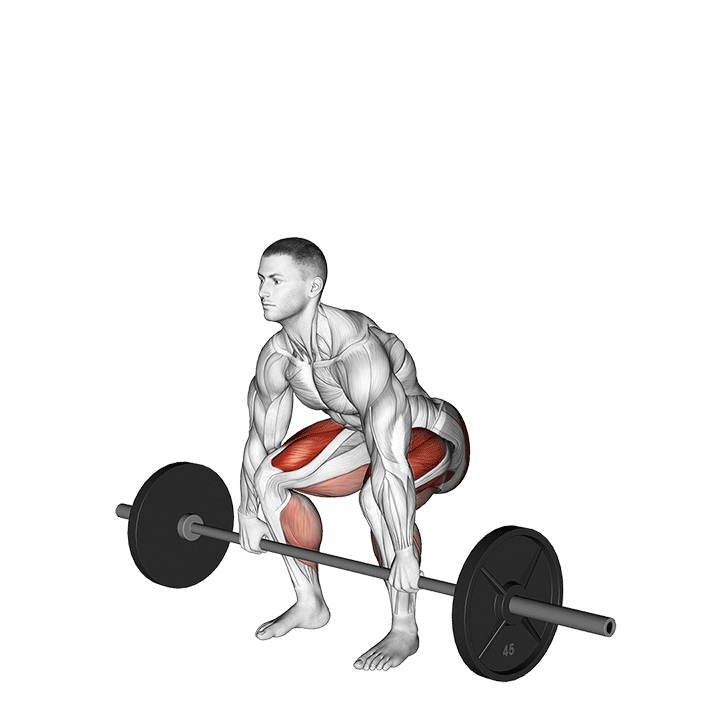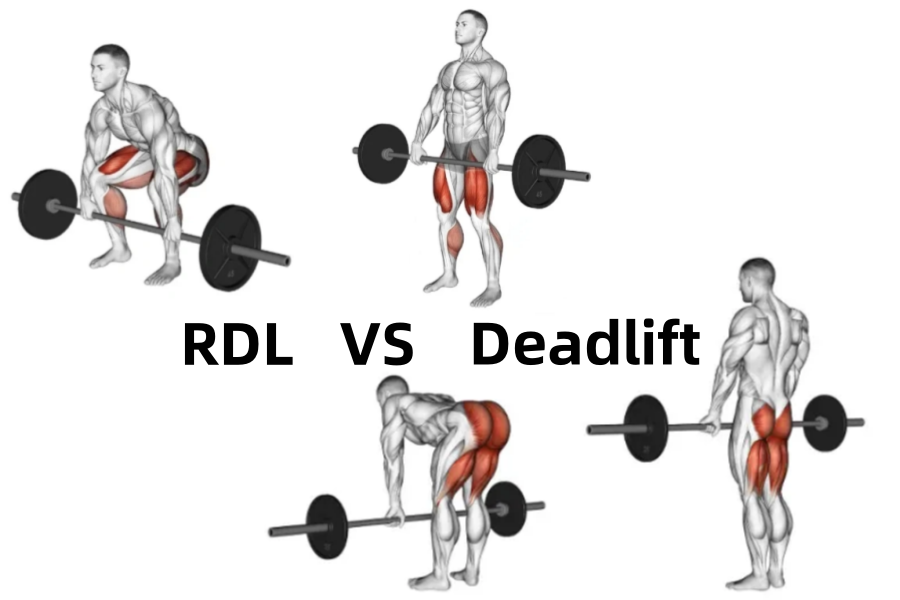RDL vs Deadlift: Let’s settle this barbell debate once and for all. The Romanian Deadlift (RDL) and the traditional Deadlift are both powerhouse moves for building serious lower body and posterior chain strength. RDLs emphasize the hamstrings and glutes with a focus on the hip hinge, while deadlifts are a more full-body exercise, engaging the quads and back more significantly. But step into any gym, and you’ll see folks using them almost interchangeably – often with cringe-worthy form. The truth is, they’re fundamentally different tools for different jobs. Understanding how they differ – in focus, execution, and benefits – is crucial to unlocking their real power in your training. Let’s break it down.
1. The Difference: RDL vs Deadlift
1.1 Romanian Deadlift (RDL)
Laser-targets your hamstrings and glutes. This exercise is the masterclass in the hip hinge – pushing your hips back while keeping your spine long and strong. It emphasizes the eccentric (lowering) phase, which is crucial for muscle growth and tendon resilience.
- Range of Motion: You lower the weight by pushing your hips straight back, feeling an intense stretch down the back of your legs. The bar travels down to just below your knees – not to the floor. If you feel your lower back rounding before you hit that point, STOP. That’s your range. I’ve seen too many people sacrifice form for depth and pay the price.

- Benefits:
- Hamstring & Glute Growth: Unmatched for building strength and definition in these muscles.
- Hip Hinge Mastery: Teaches you the fundamental movement pattern essential for safe lifting and athletic performance.
- Injury Resilience: Strengthening the hamstrings eccentrically is proven to reduce the risk of strains – a study in the Journal of Strength and Conditioning Research found eccentric hamstring work reduced injury rates by up to 65% in athletes.
- How to Do It:
- Stand tall, feet hip-width, holding a barbell or dumbbells in front of your thighs. Engage your lats (pull shoulders down & back).
- Take a deep breath, brace your core like you’re about to be punched in the gut.
- Initiate the movement by pushing your hips straight back. Keep your chest up and spine neutral. Feel the stretch in your hamstrings.
- Lower the weight, keeping it close to your legs, only as far as your hamstring flexibility allows without rounding your lower back (usually just below the knees).
- Drive your hips forward to return to the start position, squeezing your glutes hard at the top. Exhale as you finish the movement. No leaning back!
1.2 Deadlift
This is your total-body strength builder. It massively engages your quads, hamstrings, glutes, lower back, lats, traps, and core. It’s about generating power from the floor to stand tall.
- Range of Motion: You lift the bar from a dead stop on the floor to a full standing position (hips and knees fully extended), then lower it back down to the floor under control for each rep. That full reset is key.

- Benefits:
- Total Body Strength & Muscle: Builds foundational strength and muscle mass across your entire body.
- Raw Power & Athleticism: Develops explosive power crucial for sports. That initial drive off the floor is pure force production.
- Grip Strength: Holding onto heavy weights builds Popeye forearms.
- How to Do It:
- Stand with feet hip-width, barbell over mid-foot. Bend at hips AND knees to grip the bar just outside your legs.
- Position shins close to the bar, chest up, spine neutral, shoulders slightly over the bar. Pull your lats down (“pack” them).
- Take a big breath, brace your core fiercely.
- Drive through your WHOLE foot, pushing the floor away. Focus on extending your hips and knees simultaneously. Keep the bar close to your body – scraping your shins/thighs is normal (wear long socks!).
- Stand tall at the top, shoulders back, glutes squeezed. Do NOT hyperextend your lower back.
- Lower the bar by pushing hips back first, then bending knees once the bar passes them, controlling it back to the floor. Reset your position before the next rep.
1.3 Key Differences
| Feature | Romanian Deadlift (RDL) | Deadlift (Conventional) |
|---|---|---|
| Primary Focus | Hamstrings, Glutes (Hip Hinge) | Full Body Strength & Power |
| Starting Point | Standing, Bar at Hips | Bar on the Floor |
| Range of Motion | Bar lowered below knees (Hamstring stretch) | Bar lifted from floor to standing |
| Knee Action | Slight, constant bend | Significant bend at start, extends during lift |
| Eccentric Focus | High (Controlled Lowering) | Important, but concentric (lifting) is primary |
| Muscles Emphasized | Hammies, Glutes, Spinal Erectors | Quads, Hammies, Glutes, Back, Core, Grip |
| Best For | Hypertrophy (backside), Hinge Skill, Injury Prevention | Max Strength, Power, Total Mass |
2. Choosing Your Goal: RDL, Deadlift, or… Both?
- “I want killer hamstrings and glutes, and to move better.” ➔ RDL is your MVP. Its focused tension on the posterior chain and strict hip hinge pattern is unbeatable for building that shelf and teaching your body to hinge safely. I use it religiously with runners and clients coming back from hamstring tweaks.
- “I want to get brutally strong, build muscle everywhere, and feel like a powerhouse.” ➔ Deadlift is essential. Nothing builds foundational, raw strength and total-body muscle quite like pulling heavy weight from the floor. If you have one “big lift” day, this is often the cornerstone. I’ve seen clients add serious muscle and confidence after mastering this.
- “I want to improve my deadlift and stay injury-free.” ➔ Do BOTH. This is the sweet spot for most lifters, honestly. Here’s why:
- RDLs Build the Engine: They strengthen the hamstrings and glutes specifically through the range used hardest at the top of the deadlift (the lockout). Stronger hammies mean a stronger pull overall and less strain on your lower back when things get heavy. It directly addresses a common weak point.
- Deadlifts Apply the Force: They let you practice the full movement pattern under load, building the coordination and total-body strength needed for max performance.
- The Injury Shield: RDLs, with their controlled eccentric and focus on form, strengthen the vulnerable hamstrings and reinforce proper bracing and hinging. This makes your heavy deadlifts safer. Research consistently shows incorporating accessory lifts like RDLs reduces injury risk in compound movements. Think of RDLs as your deadlift’s bodyguard.
RDL vs Deadlift: Don’t overcomplicate them. The deadlift reigns supreme for raw, total-body strength and power. The RDL is the undisputed champ for hammering hamstrings, glutes, and mastering the hip hinge safely.
Welcome! I’m Jordan Mitchell, the dedicated editor at Leadman Fitness, where we specialize in manufacturing high-quality bumper plates, barbells, weight machines, kettlebells, and dumbbells. With a passion for fitness and a keen eye for detail, I ensure that our product information is clear, accurate, and engaging for our customers. My role involves collaborating closely with our design and production teams to highlight the innovative features and superior craftsmanship that set Leadman Fitness apart in the industry. Whether you’re a professional athlete or a fitness enthusiast, I’m here to provide you with the information you need to achieve your training goals with our top-of-the-line equipment.
